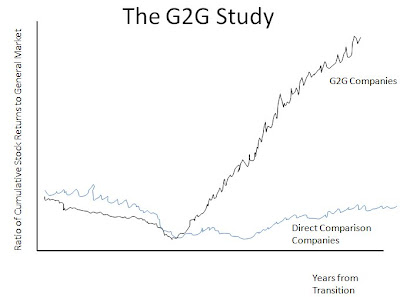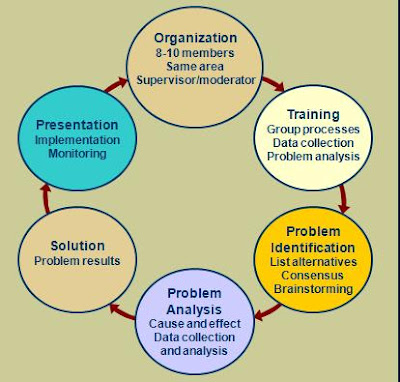
Curiosity will conquer fear even more than bravery will...Knowledge is power.... Bismillahirahmanirrahim....
Wednesday, September 17, 2008
Create Positive Problem then Solve the Problem
 Our mind is designed to be creative. In order to explore our creativity, we create problem out of nothing. Almost every problem such as health, financial, relationships is create by ourselves we just cant simply be simple, easy and peace. We want problem. Thus, it is important to create a positive problem which can generate positive outcome rather than creating negative problem which generate negative outcome.
Our mind is designed to be creative. In order to explore our creativity, we create problem out of nothing. Almost every problem such as health, financial, relationships is create by ourselves we just cant simply be simple, easy and peace. We want problem. Thus, it is important to create a positive problem which can generate positive outcome rather than creating negative problem which generate negative outcome.It can all simply be done by steps below
1 - classify the negative and positive problem
2 - Put your energy and focus towards the positive problem and ignore the negative problem
3 - Solve the problem (there are many techniques which can help you)
Learn More
Sunday, September 14, 2008
Saturday, September 13, 2008
How to Give and Gain Information During Communication?

•You may start out by requesting fact (A) but the person may give a statement of feelings and opinion (D). If that happens then accept that the person wishes to work in this area and get statements of fact (B). If so, this a strong cue you should follow.
Friday, September 12, 2008
Concept of Hedgehog - Good to Great Companies

The fox knows many things, but the hedgehog knows one big thing.”
Foxes pursue many ends at the same time and see the world in all its complexity. They are scattered or diffused, moving on many levels.
Hedgehogs simplify a complex world into a single organizing idea, a basic principle or concept that unifies and guides everything.For a hedgehog, anything that does not somehow relate to the hedgehog idea holds no relevance
1.What can you be the best in the world at (and, equally important, what you cannot be the best in the world at)
What you can be the best at might not even be something in which you are currently engaged.
2.What drives your economic engine?
Must discover the single denominator (profit per X ) that has the greatest impact on your economics/budgeting.
3.What are you deeply passionate about?
What do you have a genetic or God-given talent to do?
What are you well-paid to do?
What do you enjoy doing that you absolutely love to do, enjoying the actual process for its own sake?
Studies of Good To Great Companies
 Aren’t necessarily high profile leaders
Aren’t necessarily high profile leadersSome seem to come from Mars- quiet, shy, and even reserved.
Have personal humility and professional will.
Get the right people on the bus- Wrong people off the bus.
After they got the right people on the bus, they figured out where to drive it.
Good to Great transformations never happened in one swoop.Leaders put the company before themselves
The Level 5 Leadership - Good to Great Companies

The Person with Level 5 Leaderhip Characteristics
Leaders who employ a paradoxical mix of personal humility and professional will
Set up successors for even greater success
Compelling modesty, self-effacing, understated
Fanatically driven to produce sustainable results
More plow horse than show horse
More plow horse than show horse
Thursday, September 11, 2008
Dimension of Change

Help people see
Compelling, eye catching dramatic situations are created to help others visualize problems, solutions, or progress in solving complacency, strategy, empowerment
Seeing Something New Hits the Emotion
The visualization provides useful ideas that hit people at a deeper level than surface thinking. They evoke a visceral response that reduces emotions that block change and enhance those that support it. Emotionally charged ideas change behaviour or reinforce changed behaviour
Give People Analysis
Information is gathered and analyzed, reports are written, and presentation are made about problems, solutions, or progress in solving urgency, teamwork, communication, momentum slippage
Data and Analysis Influence How we think
The information and analysis change people’s thinking. Idea inconsistent with the needed change are dropped or modified. New thoughts change behavior or reinforce changed behaviour
Waiting Time Analysis?

Do you prefer multiple-server waiting line or single servier waiting line?
Channels
number of parallel servers for servicing customers
Phases
number of servers in sequence a customer must go through
What Do You Know About Quality?

wQuality circle
ngroup of workers and supervisors from same area who address quality problems
wProcess/Quality improvement teams (QITs)
nfocus attention on business processes rather than separate company functions
What is Six Sigma?

wA process for developing and delivering virtually perfect products and services
wMeasure of how much a process deviates from perfection
w3.4 defects per million opportunities
wSix Sigma Process
nfour basic steps of Six Sigma—align, mobilize, accelerate, and govern
wChampion
nan executive responsible for project success
Wednesday, September 10, 2008
Tuesday, September 9, 2008
What it the Symptom of Chronic Problem?

Having A Whole-Person Paradigm of human nature gives you an uncommon ability to explain, predict and diagnose the greatest problems in your life and in your department or team. When leaders possess inaccurate and incomplete paradigms of human nature, they design systems (i.e. communication, recruiting, reward and compensation) that fail to draw out the full potential of people. These system misalign with the department’s team’s or family core mission, values and strategy.
Based on the charts below, circle the symptoms of chronic problems you see in your department or team.
Based on the charts below, circle the symptoms of chronic problems you see in your department or team.
How To Understand The Importance of Conscience?
 Our conscience will guide our behavior and practice towards the needs to leave a legacy. The voice of conscience always calls for doing what’s right and leaving the wrong doing. It drives us towards meaning and service. It is the guiding force to vision, discipline and passion.
Our conscience will guide our behavior and practice towards the needs to leave a legacy. The voice of conscience always calls for doing what’s right and leaving the wrong doing. It drives us towards meaning and service. It is the guiding force to vision, discipline and passion.Reread the following quote: “That you may retain your self-respect, it is better to displease the people by doing what you know is right than to temporarily please them by doing hat you know is wrong.”
Describe a time when you found yourself in this situation. What was the long-term outcome?
Revisit the vision. Conscience provide why of your vision. Describe the conscience reflected in your vision.
Your conscience speaks to you all the time. Perhaps yours has been telling you to improve in some ways or make up for previous wrong doings.
Subscribe to:
Comments (Atom)





































